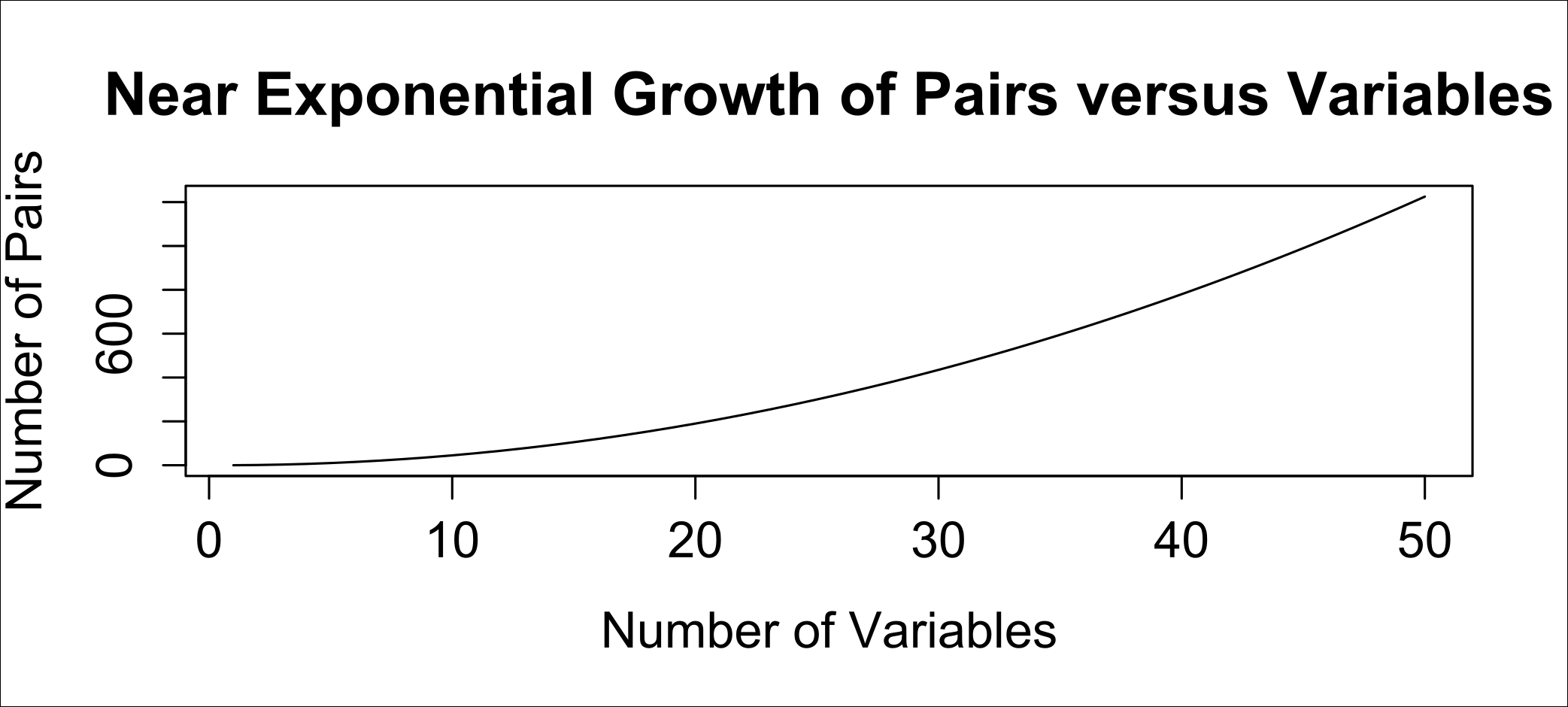Exploring multiple variables simultaneously
All right. You have arrived at the last section of exploratory data analysis. Now you will expand your exploration to multiple variables at once. Typical datasets have many variables, but a bivariate analysis limits you to pairwise comparisons. Exploring five variables, two at a time creates 10 pairs, 10 variables create 45, 20 variables create 190, 40 variables create 780, and so on. The impact on workflow is nearly exponential, as shown in the following diagram:

As the number of features (variables) in your dataset grows, your strategy for exploratory data analysis must scale along with your data. Your ...
Get Introduction to R for Business Intelligence now with the O’Reilly learning platform.
O’Reilly members experience books, live events, courses curated by job role, and more from O’Reilly and nearly 200 top publishers.

